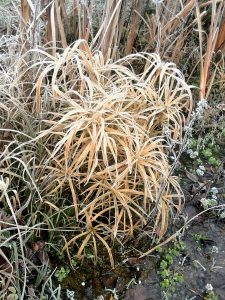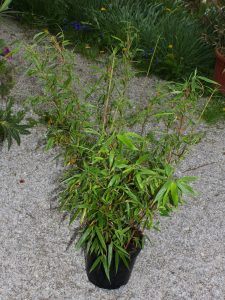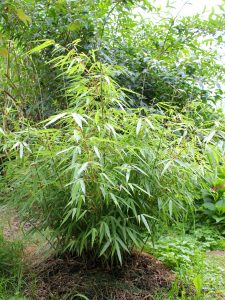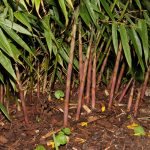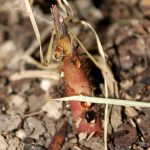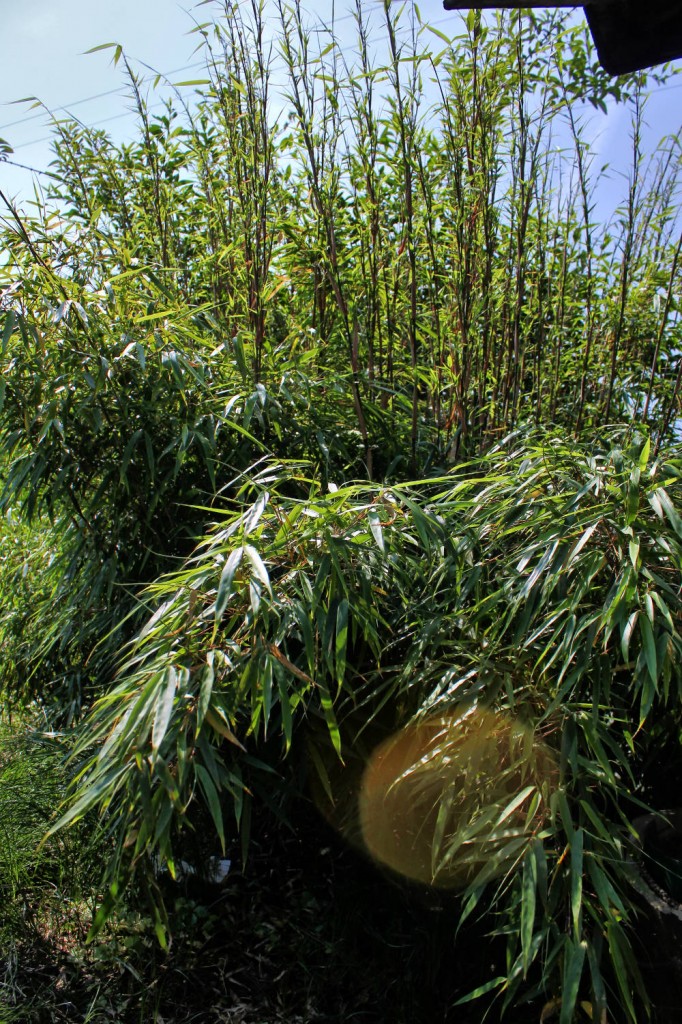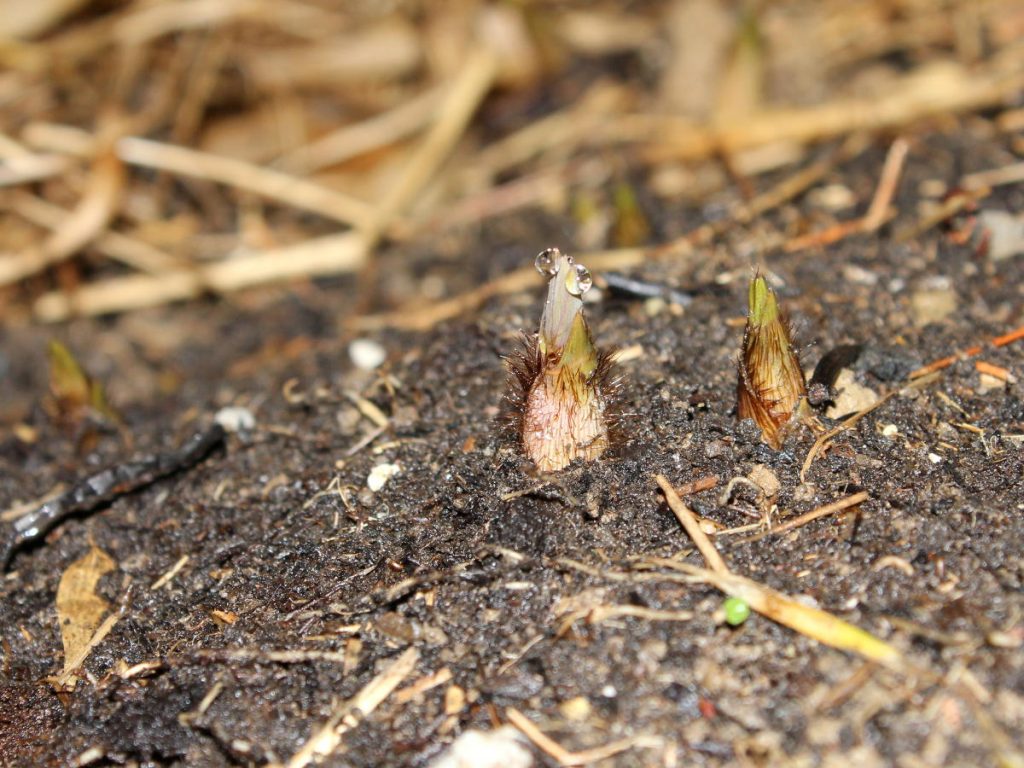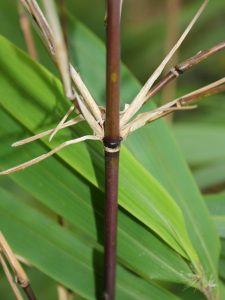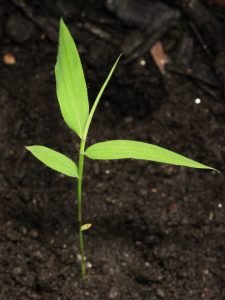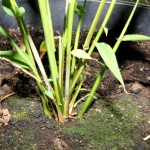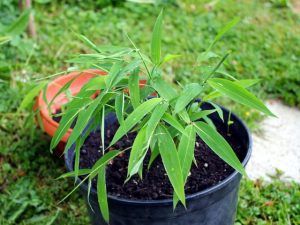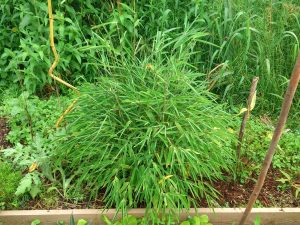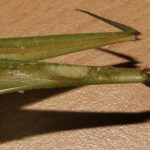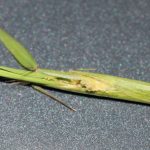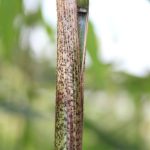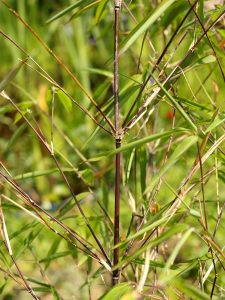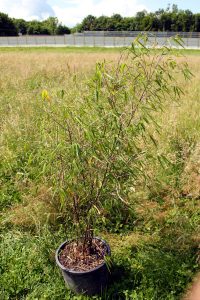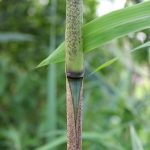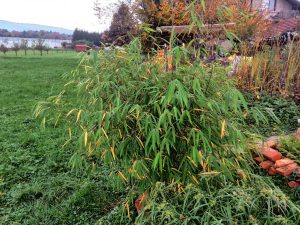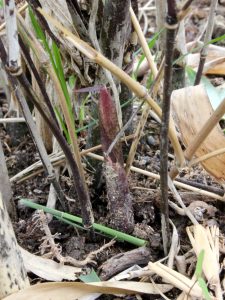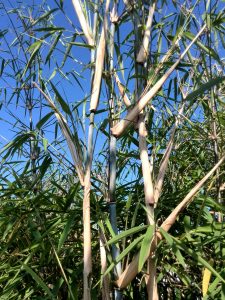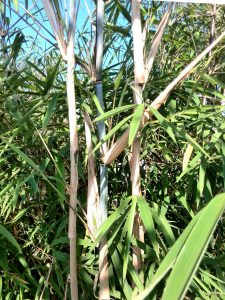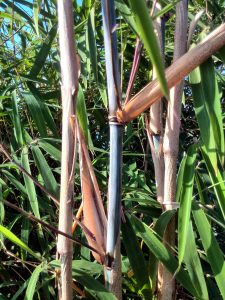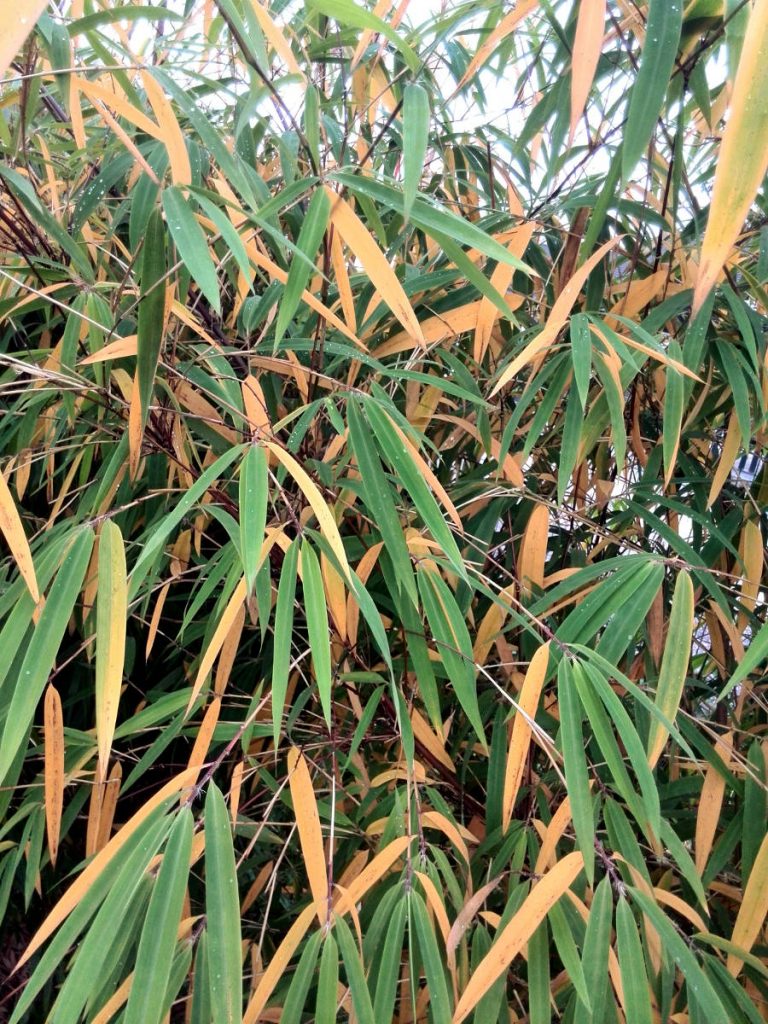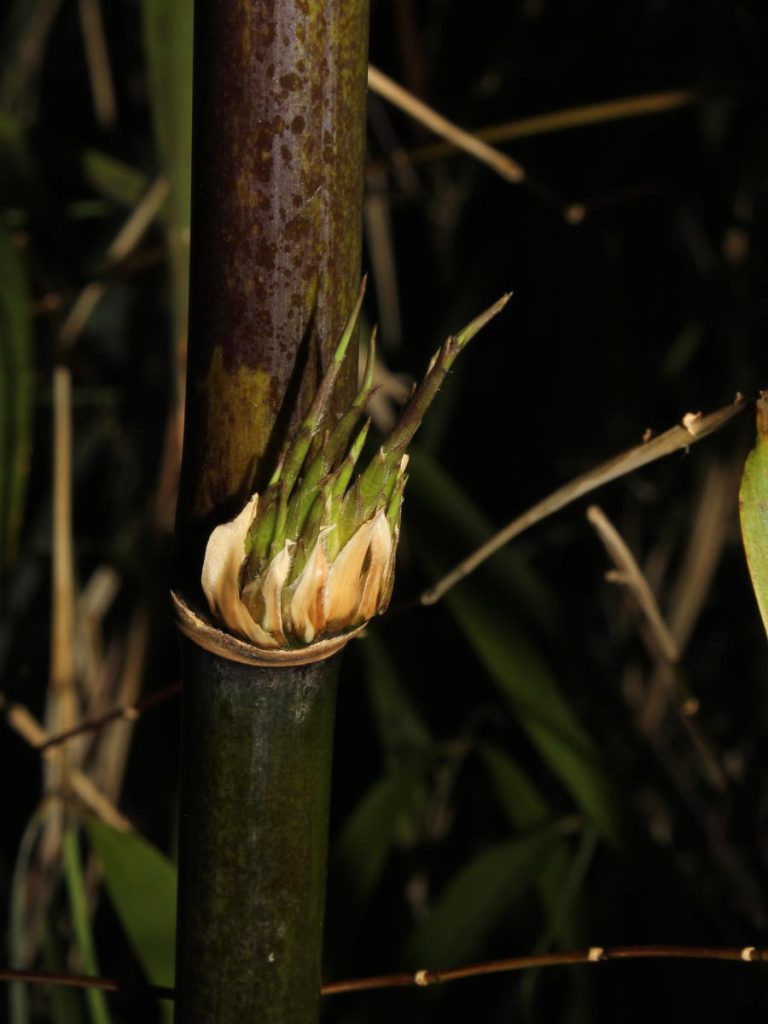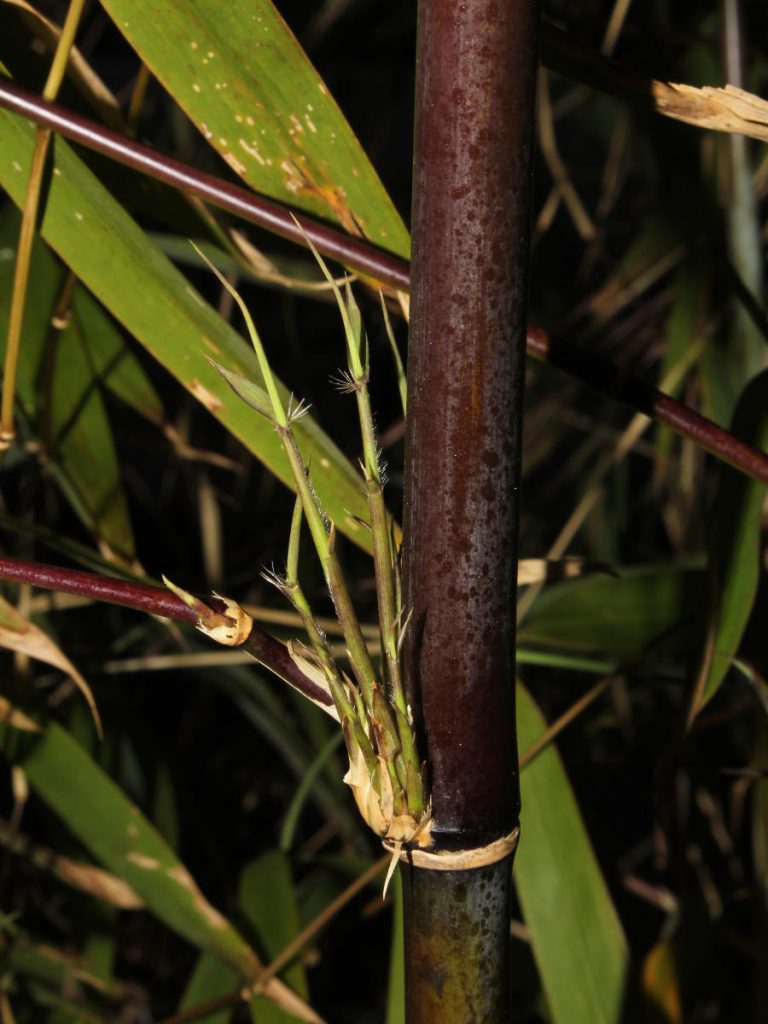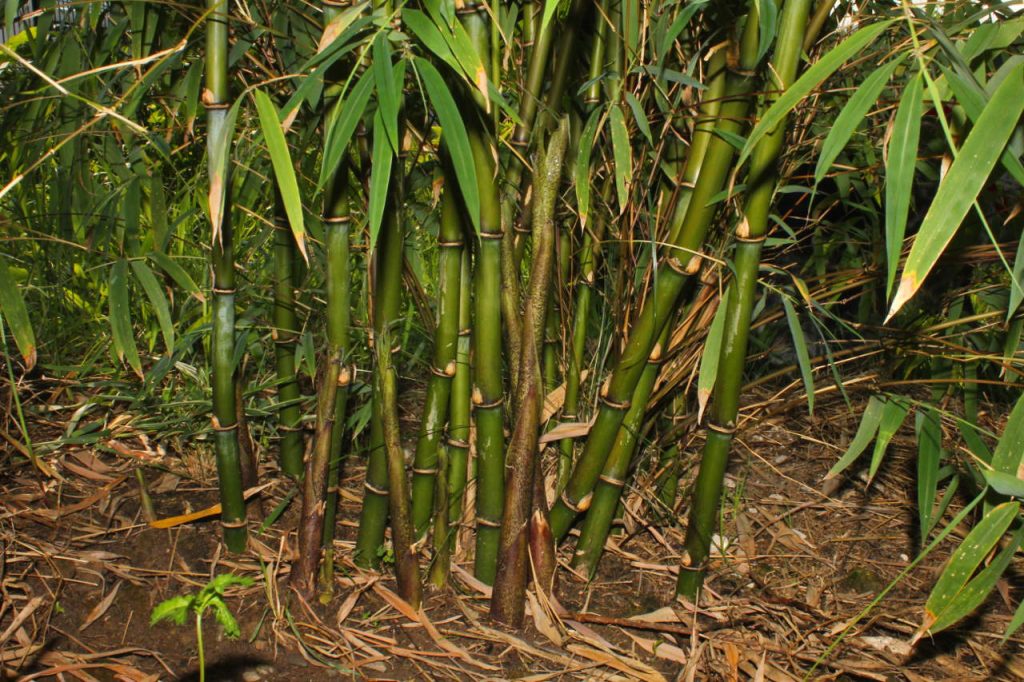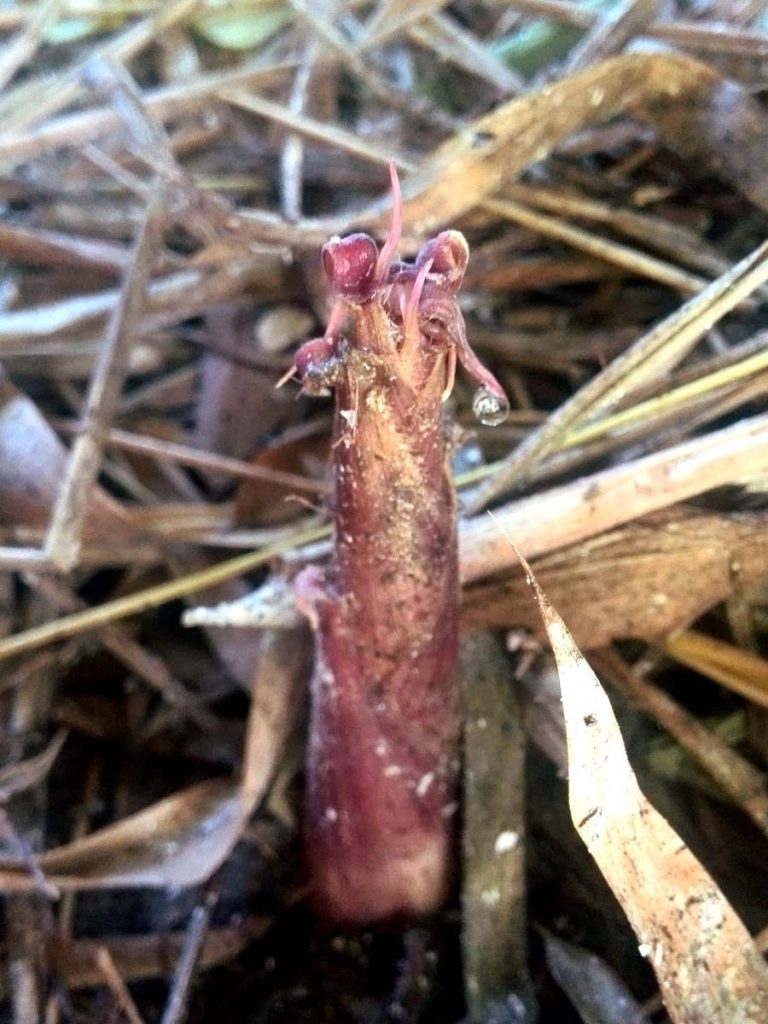Spring 2014
With warm weather, dormancy ended and new growth cycle started.
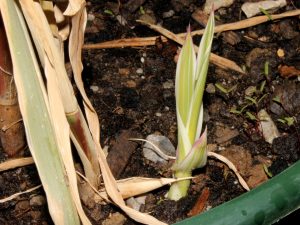 I stored weak Arundo donax Variegata divisions from last year in heated place without enough light. They survived, but not without casualties. Plants ended up even weaker and hopefully they will recover when I finally plant them outside. I learned my lesson to never store Arundo donax inside during the winter again. Most of the unvariegated clones I got by layering ended badly. Only two plants remain alive above ground, many died below the soil level as well. Heat, low light level and wet soil with minimal oxygen capacity did their worst. I left one clone outside and it froze and thawed continuously until spring, now it’s also waking up. It may end up the best.
I stored weak Arundo donax Variegata divisions from last year in heated place without enough light. They survived, but not without casualties. Plants ended up even weaker and hopefully they will recover when I finally plant them outside. I learned my lesson to never store Arundo donax inside during the winter again. Most of the unvariegated clones I got by layering ended badly. Only two plants remain alive above ground, many died below the soil level as well. Heat, low light level and wet soil with minimal oxygen capacity did their worst. I left one clone outside and it froze and thawed continuously until spring, now it’s also waking up. It may end up the best.
One variegated shoot already decided it’s about time to break free.

Borinda fungosa seedling that got fried when temperatures dropped to around -10°C is regenerating. First branch buds are pale green, some of them almost white. Pale leaves that are starting to form have that distinctive pinkish tan like many other variegated bamboos. It doesn’t seem to be variegated though, no true leaves are fully formed yet.


After prolonged sun exposure, even the newest shoots began to turn color from green to shiny dark brown. Culms get their specific color and they have a glossy look, just as they were polished. Young culms with wax coating take longer to change color. Culms with old, partly degraded remains of culm sheaths, can be totally brown, but beneath the straw colored sheath remnants, culms are green. During the spring, there are almost no leaves on fungosa, which means there’s a lot of light.


One of the last plants that started growing was cold hardy Hibiscus Hibiscus moscheutos. It was started from seed year ago and I can only speculate if it’s label was actually correct. Color of it’s flowers also remains a mystery.







